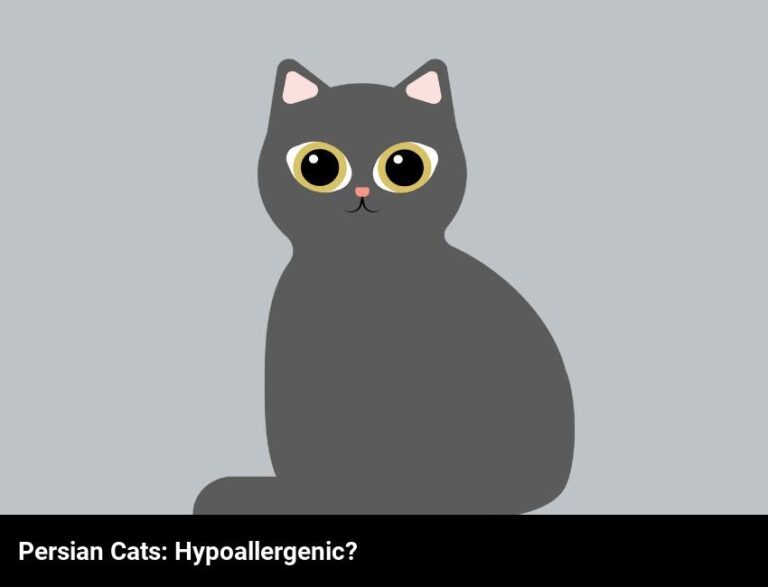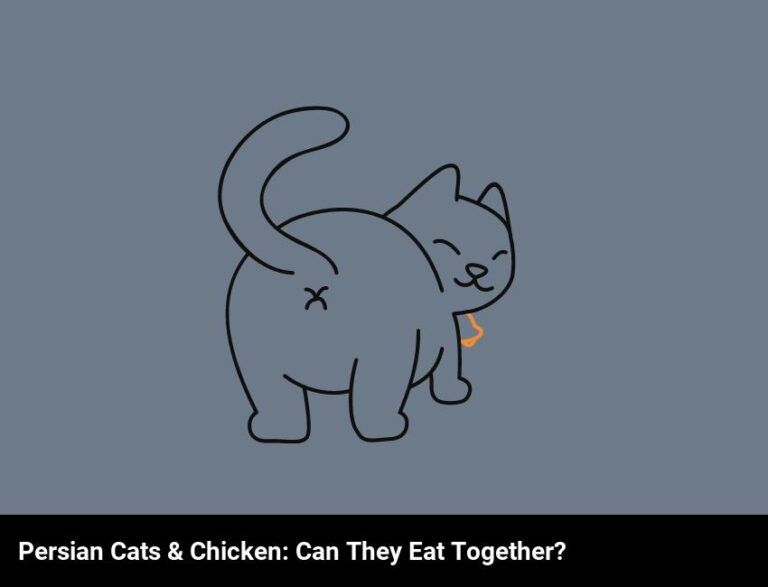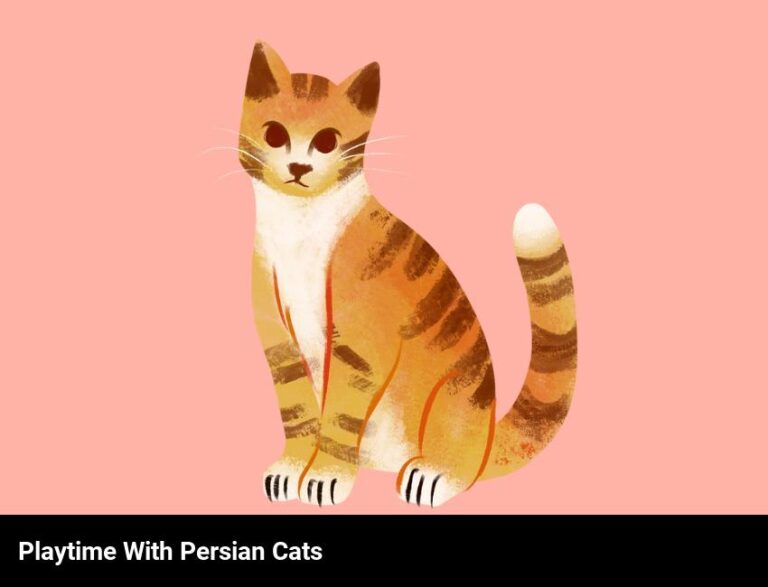Are Himalayan And Persian Cats The Same?
No, Himalayan and Persian cats are different breeds. Himalayan cats have long hair and a pointed face, while Persian cats have a round face and long, thick fur.
When it comes to cats, have you ever stopped to wonder if Persian cats and Himalayan cats are the same? They may look similar, but are they really the same? In this blog, I’ll be exploring the differences between Himalayan and Persian cats and discussing their physical characteristics, temperament, grooming needs, cost and suitability for children.
I’m personally a big fan of both Himalayan and Persian cats and know a bit about them, so I’m excited to share my knowledge with you. I’ve owned both breeds and can tell you that, while they do share some similarities, there are a few key differences between them that you should know about.
So let’s dive in and explore the differences between Himalayan and Persian cats, and see what makes them unique.
What are the differences between himalayan and persian cats?
No, Himalayan and Persian cats are not the same. While they both have long, luxurious coats, they are two distinct breeds with different characteristics.
The Himalayan breed has a unique pointed pattern on their coat that is similar to the Siamese breed. They also have a more slender body and smaller face than Persians.
The Persian breed is known for their thick, luxurious fur and round faces. They have a much larger body and are often more cuddly than Himalayans.
Himalayans tend to be more active and independent than Persians. They have an energetic personality and enjoy playing and exploring. On the other hand, Persian cats are usually more laid back and prefer to snuggle.
Himalayan cats are also known for their intelligence. They can learn tricks and be trained quickly. Persians, on the other hand, are known for their loyalty and affection.
Both breeds are known for their loving personalities, but there are clear differences between Himalayan and Persian cats. If you’re looking for an active, intelligent companion, a Himalayan might be the best choice for you. But if you’re looking for a loyal, cuddly lap-cat, then a Persian is probably the perfect fit.
What physical characteristics do himalayan and persian cats share?
When it comes to physical characteristics, Himalayan and Persian cats have a lot in common. Both cats have long, dense fur that comes in a variety of colors, like white, black, gray, and cream. They have big round eyes and a short, broad face. Both cats also have thick, muscular legs and a thick, long tail.
Himalayans and Persians are also known for their luxurious coats. Both have long, full fur that will require regular brushing to keep it looking healthy. The fur will also need to be trimmed at least once a year, to prevent it from becoming tangled and matted.
These cats are also known for their large, round eyes and short, wide face. The eyes of both cats are typically dark and almond-shaped, and their face is broad and round.
Another physical characteristic that Himalayan and Persian cats share is their thick legs. Both cats have strong, muscular legs that are perfect for jumping and running. They also both have a thick, long tail that can be used for balance when jumping and running.
Finally, both of these cats are known for their sweet, loving personalities. They are both very affectionate and loyal to their owners and are known for being great lap cats.
So, if you’re looking for a cat that has luxurious fur, big round eyes, a short, wide face, thick legs, and a long, thick tail, then a Himalayan or Persian might be the perfect choice for you.
What type of temperament do himalayan and persian cats have?
Yes, Himalayan and Persian cats have similar temperaments. They are both gentle and friendly cats that love to cuddle and be around people. They are both known for their laid-back and calm nature.
Himalayan cats are known for their intelligence and loyalty. They are very gentle with people and other animals, making them a great pet for families with children and other pets. They also have a natural curiosity, making them eager to explore their environment.
Persian cats are known for their sweet and affectionate nature. They are very social and love to be around people. They are also very gentle and patient, which makes them a great companion for children. Persian cats love to be petted and cuddled and they enjoy playing with toys.
Both Himalayan and Persian cats are loyal and loving companions. They are both highly trainable and enjoy learning new tricks and commands. They are both very social and love to be around people. Himalayan and Persians cats make great family pets and they will bring a lot of joy and companionship to your home.
How are himalayan and persian cats similar in terms of grooming needs?
Yes, Himalayan and Persian cats have similar grooming needs! Both of these cats have long, luxurious coats that require daily brushing and combing to keep them looking their best. They both need to be bathed regularly, and they both need regular nail trims and ear cleaning.
Himalayan and Persian cats both require frequent grooming because they have double coats. The undercoat is soft and thick, and the topcoat is long and silky. This combination of coats means that the hair can easily get tangled and matted. Regular brushing helps keep the fur looking sleek and shiny, and also helps to reduce shedding.
In addition to regular brushing and combing, Himalayan and Persian cats both need regular bathing. This helps to keep the coat looking clean and prevents the fur from becoming too oily. When bathing these cats, it’s important to use a mild shampoo that is specially formulated for cats.
Finally, Himalayan and Persian cats both need regular nail trims and ear cleaning. Nail trims help to keep the nails short and prevent them from becoming overly sharp. Ear cleaning helps to remove excess wax and dirt, and helps to prevent ear infections.
Overall, Himalayan and Persian cats have similar grooming needs. Brushing, bathing, nail trims, and ear cleaning are all important parts of maintaining their beautiful coats.
Are himalayan and persian cats considered hypoallergenic?
No, Himalayan and Persian cats are not considered hypoallergenic. While both cats have similar physical traits, such as long, beautiful fur and sweet personalities, their allergen levels are actually quite different. Himalayan cats produce more of a protein that is known to cause allergic reactions, while Persian cats produce less of this protein and are thus considered less allergenic.
That said, no breed of cat can be 100% hypoallergenic. Even if a person finds a breed that produces less of the allergenic protein, there’s still a chance that they could develop an allergic reaction. It’s important to keep this in mind if you’re considering a Himalayan or Persian cat as a pet.
Despite this, Himalayan and Persian cats have a lot in common, such as their tendency to be very loyal and affectionate. They also both require lots of grooming, as their long fur can be prone to tangles and mats if not taken care of properly. Both cats also have a tendency to be quite vocal, and will often meow or purr to get your attention.
In the end, while Himalayan and Persian cats are both beautiful and loving pets, they are not considered hypoallergenic. If you have allergies, you may want to consider a different breed of cat that produces less of the allergenic protein. However, if you don’t have allergies, both of these cats make excellent companions.
What is the cost of owning a himalayan or persian cat?
Owning a Himalayan or Persian cat is not cheap! Depending on where you get your cat, you will likely pay at least $500 for a Himalayan or Persian kitten. That’s just the start of the cost.
You will need to provide regular veterinary care for your cat. This includes annual check-ups, vaccinations, and parasite control. Plus, you’ll need to budget for food, toys, litter, grooming, and other supplies. All of this will cost you hundreds of dollars each year.
Himalayan and Persian cats are both purebred cats, so you’ll be paying for the privilege of owning a purebred. It could cost you thousands of dollars to buy a purebred kitten, depending on the breeder and the quality of the kitten.
So, if you’re looking to buy a Himalayan or Persian cat, be prepared to pay a hefty price tag.
Are himalayan and persian cats suitable for families with children?
Yes, Himalayan and Persian cats can make great, loving additions to families with children. These breeds are known for their gentle and docile temperament, making them a great choice for households with children.
Both Himalayan and Persian cats are typically quite friendly and sociable around children. They can be quite playful and entertaining, and they love the attention that children give them. Because of their loving and loyal nature, these cats can make great furry companions for your children.
Both Himalayan and Persian cats typically have a good amount of patience when it comes to children. They can tolerate a bit of rough play and are typically more than happy to let your children cuddle them and give them kisses. These cats can also be great teaching tools, as they can help children learn how to be gentle and responsible pet owners.
Ultimately, whether a Himalayan or Persian cat is suitable for families with children depends on the temperament of the individual cat. Some cats are more tolerant of children than others, so it is important to take your time when choosing a cat to make sure that it is the right match for your family.
What are the advantages of owning a himalayan or persian cat?
Yes! There are many advantages to owning a Himalayan or a Persian cat. For starters, they are beautiful and loving creatures. They are also very clean and low-maintenance, which makes them great companions.
Furthermore, both breeds of cats are incredibly smart and trainable. They are more active than most other cats and are very playful, making them great for families with children. They are also very affectionate, often enjoying cuddles and spending time with their owners.
Another great advantage of owning a Himalayan or Persian cat is their low-shedding coats. They have a unique and luxurious fur coat that requires minimal upkeep, so you don’t have to worry about vacuuming up fur balls every day.
Finally, these breeds of cats are very healthy and long-lived. They tend to have fewer health problems than other breeds, and with proper care and attention, they can live for up to 15 years!
So whether you are looking for a beautiful and loving companion or a low-maintenance pet, Himalayan and Persian cats are definitely the way to go.

Frequently Asked Questions
What unique features do himalayan and persian cats have?
Himalayan and Persian cats share some similarities, but they also have distinct features. Himalayan cats have a pointed coat pattern, while Persians have a flat face with a thick coat. Himalayans have round eyes, while Persians have almond-shaped eyes. Himalayans have a short nose, whereas Persians have a long, flat nose. In terms of personality, Himalayans are known to be social and active, while Persians are more calm and quiet.
Are there any specific care needs for himalayan and persian cats?
Yes, there are some specific care needs for Himalayan and Persian cats. Both breeds have long and thick coats that require daily brushing and combing to prevent matting and tangles. They also require regular bathing and nail clipping. Himalayan cats have sensitive digestive systems, so their diet needs to be monitored to ensure they are getting the right nutrition. Persian cats are prone to breathing problems due to their flat faces and need regular checkups with a veterinarian to ensure their respiratory health.
What advantages do himalayan and persian cats offer to pet owners?
Himalayan and Persian cats offer a variety of advantages to pet owners. They are both known for their sweet and gentle dispositions, making them excellent companions. They are also low-maintenance cats and generally enjoy being part of the family. Additionally, they are known for being quite smart and adaptable to new environments. All this makes them great pets for people of all ages.







